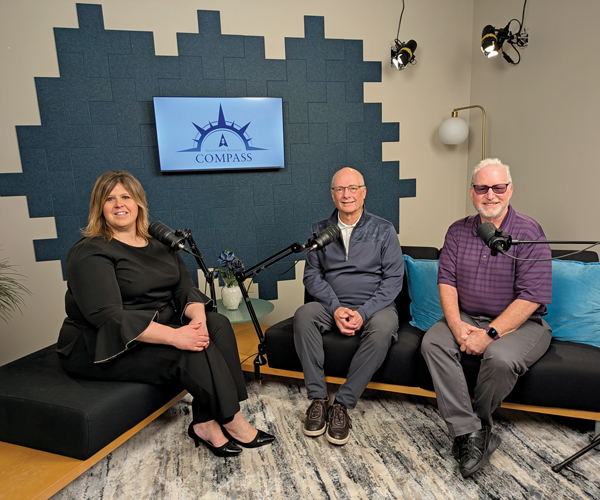The numbers are just the start of the story. You often need to dig deeper to get a better understanding of the forces that impact an industry. Later this month, those numbers should provide a nice benchmark of the nonprofit industry in our area.
On Wednesday, Nov. 13 from 11 a.m. to noon, HW&Co, Business Volunteers Unlimited (BVU) and Community Leader will be presenting the final webinar for 2024.
“Nonprofits: Beyond the Numbers” will reveal the results of a survey of Northeast Ohio nonprofits, including their thoughts and concerns on a wide variety of topics such as: budgeting; strategic planning, understanding the board and its role, donor engagement; fundraising, funding gaps and more.
You can register for the webinar at https://hwco.cpa/event/beyond-the-numbers-2024/
It’s an interesting portrait of an industry that is constantly in flux. Of the respondents, 59% see revenues increasing, with 14% expecting a decline. However, 82% expect the services nonprofits offer to increase, with only 2% expecting a decline.
According to the survey, 72% believe that their boards understand their role in the organization, with 55% having faith in the board to provide an appropriate response to emerging market forces. Another 57% believe the board effectively fills its role.
Chief areas of concern for local nonprofits include: funding gaps, donor engagement and fundraising, although only about one-third to 40% of nonprofits are mildly concerned about those topics. When it comes to IT and cybersecurity, two issues many businesses are most fearful of these days, three-fourths of nonprofits are mildly concerned or not concerned at all.
Other areas of concern include: reaching a broader segment of the population; lack of visibility in the market; recruiting volunteers; succession planning; retention of volunteers and staff; offering competitive wages and making sure the nonprofit offers a nontoxic work environment, among other issues. All of these should be included in strategic planning efforts.
However, the survey revealed that almost 20% of nonprofits don’t have a strategic plan, yet 52% of respondents believe that if they don’t do something strategically different, they won’t survive the next three to five years. And almost 79% said their organizations have considered strategic alliances, which many in the industry tout as a possible response to a contraction of funds and an increase in demand for services.
“At the same time there is an increase in demand for services, there is also increasing competition for limited resources,” says Elizabeth “Biz” Voudouris, president and CEO of BVU, an organization that has provided consulting, training and executive coaching services to thousands of nonprofits and businesses in Northeast Ohio. “So every nonprofit, whether they are large and sophisticated or smaller and not as complex, they all need to figure out how to leverage those limited resources — their dollars, their people, their volunteers — to achieve their mission. And they have to remember that they can’t be everything to everyone.
“A strategic plan is an incredible tool to define priorities, to get everyone focused on working toward the same goals and outcomes. A good strategic plan is something that leadership and the board should put together.”
And every member of the staff as well as their work objectives should be tied to the plan.
“The board should be focused on the plan at every board meeting,” adds Voudouris. “They need to evaluate what progress is being made against the plan and what might need to be changed.”
The plan should have some flexibility, Voudouris cautions.
“Nothing should be set in stone,” she says. “If some of your goals aren’t being met, or some of your programs aren’t working, you should be able to change them to allow you to focus your resources for maximum impact.”
Many nonprofits have a long-range vision, but a strategic plan should be much shorter in duration and may only be good for three to five years, says Voudouris. If a pre-existing plan is working well, there should always be the option of extending it.
At the same time, a nonprofit must always understand not only the internal trends within its organization, but also the external trends that could impact future operations.
“Is there anybody else out there providing similar services? Will new legislation have an impact on our operations? Every nonprofit needs to consider those questions and understand how they may change or increase your focus,” says Voudouris. “In addition to having a better understanding of the market, those questions may also give them an idea of who they might collaborate with in terms of delivering goods and services, especially when it comes to a specific program.”
In increasing numbers, nonprofits are creating strategic alliances with similar organizations, which only makes sense given the increased competition for limited resources.
“There have also been a lot of leadership changes in the nonprofit sector,” adds Voudouris. “When an organization is making a leadership change, it is a good time to think about a strategic alliance.”
Strategic alliances can also help a nonprofit achieve its mission more efficiently and affordably — whether the two organizations have similar missions or not — especially if there is a synergy that can be created as a part of the combined strategic vision.
The new, more diverse group can offer numerous new competencies and perspectives to help each organization achieve long-term goals.
There are numerous benefits to creating a strategic alliance, which are becoming increasingly popular after nonprofits felt the full impact of COVID. These include: cost savings; joint planning responsibilities; participation of new or different volunteers and donors; increasing the breadth and scope of services; better brand recognition and community recognition; knowledge transfer and political influence. Strategic alliances often lead to a revitalization of both organizations as well as an overall improvement in fundraising.
However, there are also drawbacks. Before creating a strategic alliance, potential problems should be carefully investigated. Outside consultants should be considered to guide the nonprofit through the process, to ensure a successful venture is attained. Partners in the alliance must have a thorough understanding of expectations and obligations as a part of the venture to avoid issues that can be devastating to the overall process.
Budgeting for Success
Like a strategic plan, budgeting is very important to overall nonprofit operations. But budgeting also needs to be more flexible than a long-term plan, allowing the organization to react to more immediate needs and challenges, says Helen Weeber, CPA, senior manager, director of HW& Co.’s Nonprofit Advisors Group. HW& Co is a CPA and advisory firm headquartered in Cleveland with numerous clients in the nonprofit sector.
“Nonprofits need to remember budgeting in all of the organization’s operations and projects,” says Weeber. “But the budget should not start and end with the finance department. You really want all those who are responsible for bringing in the dollars and those who are spending the dollars to have a spot at the table.”
The finance department should almost be a mediator, “or perhaps a better word would be facilitator, providing directions and asking some questions,” says Weeber. “Those who bring in the dollars and those who spend the dollars must be involved, otherwise it removes them for accountability in the budget.
“Fund raisers and grant writers are going to know what your chances are of receiving funds or obtaining a grant because they are out there meeting with people almost daily. They know where the funds are coming from,” says Weeber. “The organization also needs to know where the dollars are spent, what things are needed to accomplish your mission.
“That’s why there is no one formula on budgeting. It all depends on your organization, its structure and what you are trying to accomplish. A budget could look very different from one nonprofit to the next. It should not be made according to a standardized format.”
There is also no need for strict governance of the budget.
“In fact, an organization doesn’t even have to do a budget if they don’t want to,” says Weeber. “But a budget makes good business sense. It is a tool to help manage operations. While nonprofits are not profit motivated, they do need to be financially sustainable, and that is where a budget really helps.”
However, a budget should have a greater degree of flexibility.
“You need the flexibility to adapt,” says Weeber. “So think of your budget as a guide.
The more mature a nonprofit is, the longer it has been in operation, the more comfortable it seems to be operating within the parameters of a budget.
“But the more inexperienced a nonprofit is, the more flexibility you need in your budget, because you still need to find out who you are or you are doing,” says Weeber.
If you would like to know more about going “Beyond the Numbers, follow this link to join the webinar on Wednesday, Nov. 13 from 11 a.m. to noon: https://hwco.cpa/event/beyond-the-numbers-2024/
We hope you can attend!




